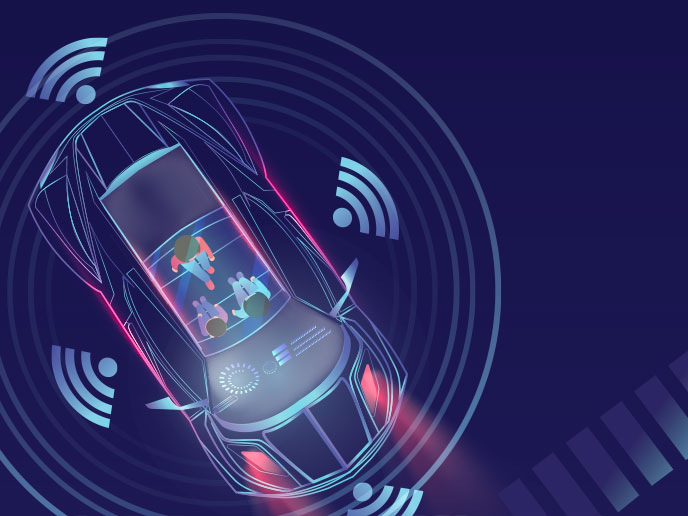Connected and automated driving: The route to a safer, more efficient and cleaner transport system
Automation and connectivity can complement and reinforce one another, contributing enormously to the European Commission's goal of reducing road deaths. Even though fatalities have more than halved since 2001, 25 300 people still lost their lives on EU roads in 2017 and another 135 000 were seriously injured. The European Commission is convinced that CAD can help ensure safer roads and greater protection of citizens.
New technology solves old challenges
Connected and Automated Mobility could reduce transport congestion and harmful emissions, while strengthening the competitiveness of the European industry, creating new jobs and boosting economic growth. The European Commission also aims to make Europe a world leader in the deployment of connected and automated mobility, including a fully digital environment for information exchange in road transport to facilitate digital information flows among relevant stakeholders. Furthermore, by 2025, the EU intends for all urban areas as well as major roads and railways in Europe to have uninterrupted 5G coverage, as laid out in the 5G Action plan. 5G will ensure high speed, and sufficient capacity for millions of passenger cars to interact at the same time. To meet this goal, the European Commission intends to start with advanced cellular technology and evolve to 5G networks. Technological solutions alone cannot overcome the challenges of congestion, transport emissions and road fatalities. We must also manage the long transition to self-driving vehicles properly and ensure that they promote low emissions and overall efficiency. A major benefit is greater independence and transport accessibility for the elderly and people with reduced mobility.
EU research - innovation and application
This CORDIS Results Pack focuses on eight projects that are spearheading CAD research funded under the EU’s FP7 and Horizon 2020 research programmes. The potential of different automated driving functions in passenger cars to improve safety and traffic flow is explored by the now completed ADAPTIVE project and continues to be developed and tested by the current L3Pilot initiative. The AutoMate project devised a novel driver-automation interaction and cooperation concept to ensure that automated driving systems will reach their full potential and can be commercially exploited. The MAVEN project, meanwhile, created algorithms for organising the flow of infrastructure-assisted automated vehicles and structuring the negotiation processes between vehicles and the infrastructure. ROADART developed intelligent transport systems (ITS) technology that enables trucks to wirelessly exchange information with infrastructure and other heavy-duty vehicles. TRAMAN21 investigated new traffic management methods and tools suitable for the era of connected transport. The aim is to enable traffic to flow as efficiently as possible, thereby preventing the jams and delays. VI-DAS employed the latest advances in sensors, data fusion, machine learning and user feedback to warn drivers about potentially dangerous situations and avoid accidents. The 5GCAR project used 5G, the latest generation of cellular mobile technology, to inform drivers about manoeuvring connected vehicles and determining the position of vulnerable road users. Finally, the work of the CARTRE project, which is continuing under ARCADE, supports the development of clearer policies in EU Member States to ensure that automated road transportation systems are interoperable and applied in a coherent way across Europe.



